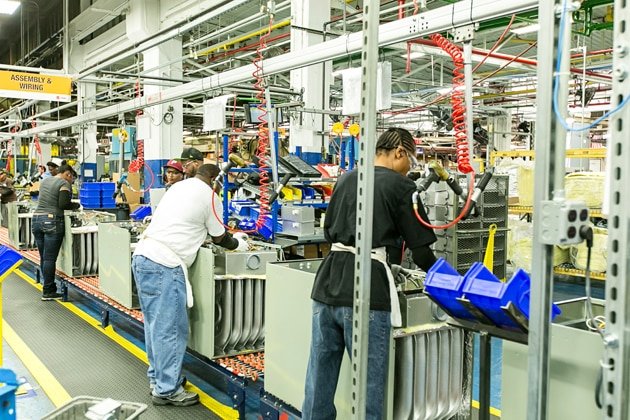Henry Ford Meets Toyota: Lean Assembly
In the early 1900’s, Henry Ford perfected the assembly line. Since then, Toyota has further enhanced the process using Japanese management techniques that tout just-in-time (JIT) production as a best practice for lean assembly.
Justi-in-time production is based on the philosophy that companies should hold little or no inventory beyond what is needed for immediate production or distribution. In other words, manufacturers should receive raw materials from suppliers hours before they will be used in production – and the manufacturer will ship the finished goods to customers as soon as it is finished, without holding any inventory. The result is improved efficiencies, lower inventory costs and reduced waste.
To be successful with JIT, other requirements are necessary, such as small lot sizes, quick setup and changeover times, superior quality controls, which all lead to maximize the efficiency of human and machine labor. Putting raw materials and parts close to the production or assembly lines reduces extra movements. Often facilities implement one piece flow, which is the movement of a single product through the manufacturing process, with U-shaped manufacturing cells to eliminate waste, helping to reduce lead times and production delays.
Placing parts close to the manufacturing flow cells can eliminate wasted time of searching for components. Workers pull components from shelves as they are needed for manufacturing. Stock locations close to assembly lines allow quick replenishment. Storage of totes, boxes and lose parts close to assembly areas improves the efficiency of the subassembly process, ensuring the right components are at the right place at the right time.
How can you do this? Eliminate every non-value added operation within your shop floor by minimizing inter-assembly process inventory and space. Ask “Why is this here?” What can we do to eliminate it? Where can I put this to keep it off the floor?
Using modular, dynamic storage units of durable construction at lineside or at subassembly stations can eliminate unnecessary touches and movements. UNEX Flow Cells keep sub-assembly inventory organized, off the floor, and in the right order for assembly. Parts can be angled toward pickers, boosting picking efficiency up to 30 percent. Parts are always within reach and workers don’t have to travel to find a part, increasing productivity and reducing manufacturing lead times so customer service levels are met.
The goal of every supply chain manager should be to improve efficiencies and streamline operations. With solutions from UNEX, businesses can achieve more flexible assembly areas, better inventory control, a cleaner work environment, optimum space utilization and multiple efficiencies for employees, better positioning the company ahead of the competition.

